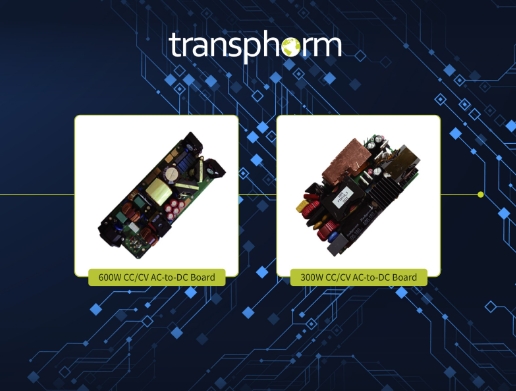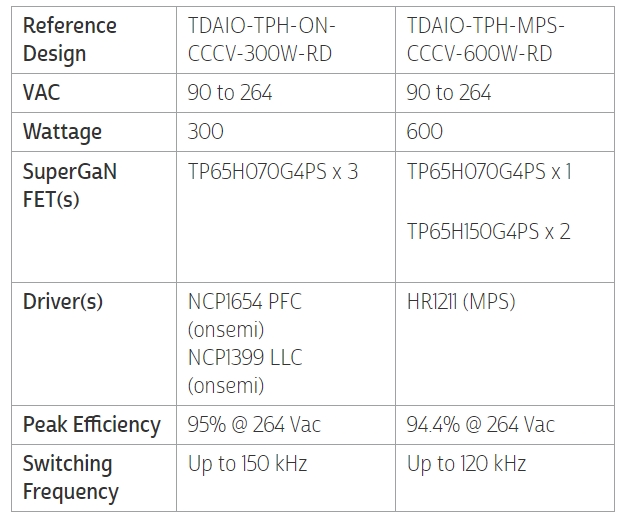

New Design Tools Enable Faster Growth of Two-Wheeler Market Design-Ins While Helping System Engineers Harness SuperGaN FET Advantages
GOLETA, Calif.—November 30, 2023—Transphorm, Inc. (Nasdaq: TGAN), a global leader in robust GaN power semiconductors, today announced availability of two new reference designs for electric vehicle (“EV”) charging applications. The 300 W and 600 W Constant Current/Constant Voltage (CC/CV) battery chargers use the company’s 70 and 150 milliohm SuperGaN® devices to deliver highly efficient AC-to-DC power conversion with high power density at competitive costs. The reference designs are intended to enable high volume production of chargers for 2- and 3-wheel EVs, of which over 14 million and over 45 million are sold annually in India and China respectively. The reference designs can also be used for a variety of applications including fast charging, LED dimmable drivers, gaming consoles, and high-performance laptops.
“GaN’s adoption in the EV market is rapidly advancing. This is largely driven by the technology’s high-power density with cost-effective, high-yield manufacturing process when compared to alternative options such as Silicon Carbide or Silicon,” said Tushar Dhayagude, Vice President of Worldwide Sales and FAE, Transphorm. “Specifically, our SuperGaN devices have achieved significant traction in two and three wheelers as they exhibit those advantages along with system and device-level cost benefits versus select Silicon solutions. Based on consistent customer design requests, we’re excited to release reference designs that can help on- or off-board charger manufacturers speed up go-to-market with GaN-based systems that can increase the performance and overall usability of next generation vehicles.”
What is CC/CV?
The Constant Current/Constant Voltage (CC/CV) lithium-ion battery charging method uses constant current in the initial stage of charging and then switches to constant voltage in later stages of charging when the battery reaches the set charge level. This ensures batteries are not overcharged.
Open-Frame CC/CV AC-to-DC Battery Chargers
The 300 W and 600 W reference designs pair the SuperGaN FETs and controllers in the popular power factor correction (PFC) and resonant LLC topologies, with the LLC being specifically designed for a wide battery range (from empty to full charge). Transphorm’s SuperGaN platform enables power system developers to maximize the PFC+LLC’s performance potential, delivering the highest efficiency possible from these topologies at a competitive cost.
The reference designs use pure analog controllers versus digital controllers that require firmware. This configuration offers several benefits such as easier designability and simplified product development driven by:
●Reduced development resource requirements.
●Reduced development time.
●Elimination of the need for potentially complex firmware programming/maintenance.
Note: The 300 W reference design includes an additional PWM input port for requesting output current levels lower than rated output value, enabling further flexibility for all battery chemistries.
Key specifications follow:
The reference designs leverage Transphorm’s SuperGaN FETs known for delivering differentiating advantages such as:
●Industry-leading robustness with a +/- 20 V gate threshold and a 4 V noise immunity.
●Easier designability by reducing the amount of circuitry required around the device.
●Easier drivability as FETs can pair with well-known, off-the shelf drivers common to silicon devices.